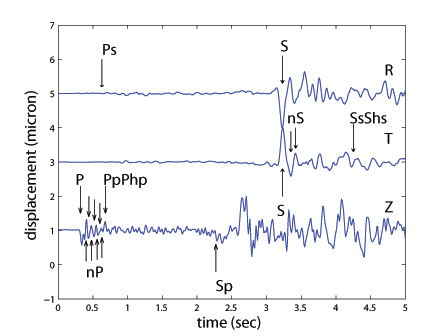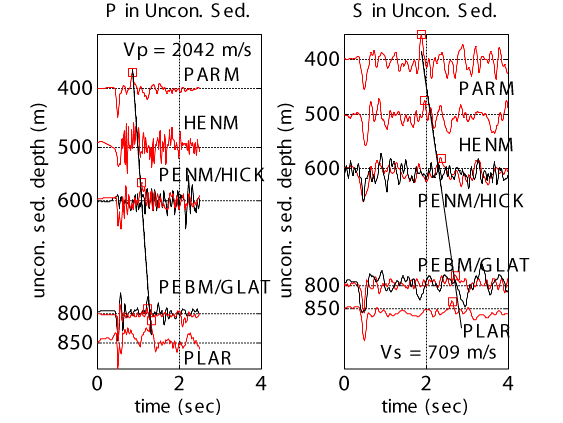CERI
Christy Chiu
Lately, my interest is in (1) the site response and wave amplification caused by unconsolidated sediments and very low-velocity near-surface soils using data recorded at the vertical arrays CUSSO, SFTN and MPHB; and (2) exploring near-surface soil structure in the Mississippi embayment by taking advantage of analytical techniques.
The direct use of my research (below) can be implemented in earthquake response for engineered environment and civil systems. It can contribute to earthquake safety through improvements in regional probabilistic earthquake hazard assessment thus reducing casualties and economic losses in urban area for the Central and Eastern US.
This research is built upon a better-constrained P- and S- velocity structure in the unconsolidated sediments beneath the loose soil zone that resulted from on-going research projects and previous studies.

Using microearthquake waveform data, this pseudo-image profiling can image velocity structure of deep unconsolidated sediments under stations in the Mississippi embayment. These methods use clearly identifiable P and S reflected waves and transmitted Sp converted waves generated at the high-impedance interface between Cretaceous-to-present unconsolidated sediments and Paleozoic sedimentary rocks, as well as high-frequency reverberations induced by extreme low-velocity near-surface soils displayed on local earthquake waveforms.

Observed travel times give important constraints on the identification of seismic phases and location of interfaces within sediments. Incorporating geotechnical data and assuming a gradient velocity model, near-surface soil structure will be resolved through a Monte Carlo simulation and simultaneously linearized body waveform inversion modeling P and S high-frequency ground motions.
The data used can be
- local earthquake waveforms collected by the Advanced National Seismic System urban strong motion stations (ANSS-MA)
- EarthScope Transportable Array
- broadband and short-period stations of the Cooperative New Madrid Seismic Network (CNMSN)
- shallow arrays – SFTN and MPHB
- the CUSSO vertical array of the University of Kentucky (UKY)
- as well as temporary broadband stations.
This study will yield better estimates of site response using instrumental recordings of local earthquakes in the central and eastern United States.
Preliminary results reveal the shear wave and strong converted S-to-P waves are amplified and near-surface soft soils produce significant high-frequency resonances with phase spectral amplitude ratios reaching up to ~12 times higher than waves observed on deeper recordings. These methods will enable us to empirically examine site response behavior of low-strain seismic waves in sedimentary basin deposits independent of geotechnical field experiments. The use of high-frequency (0.2-25 Hz) earthquake body waveforms can yield velocity structure models which can be employed to estimate site amplification for future strong ground motions due to large earthquakes in and surrounding the New Madrid seismic zone.
